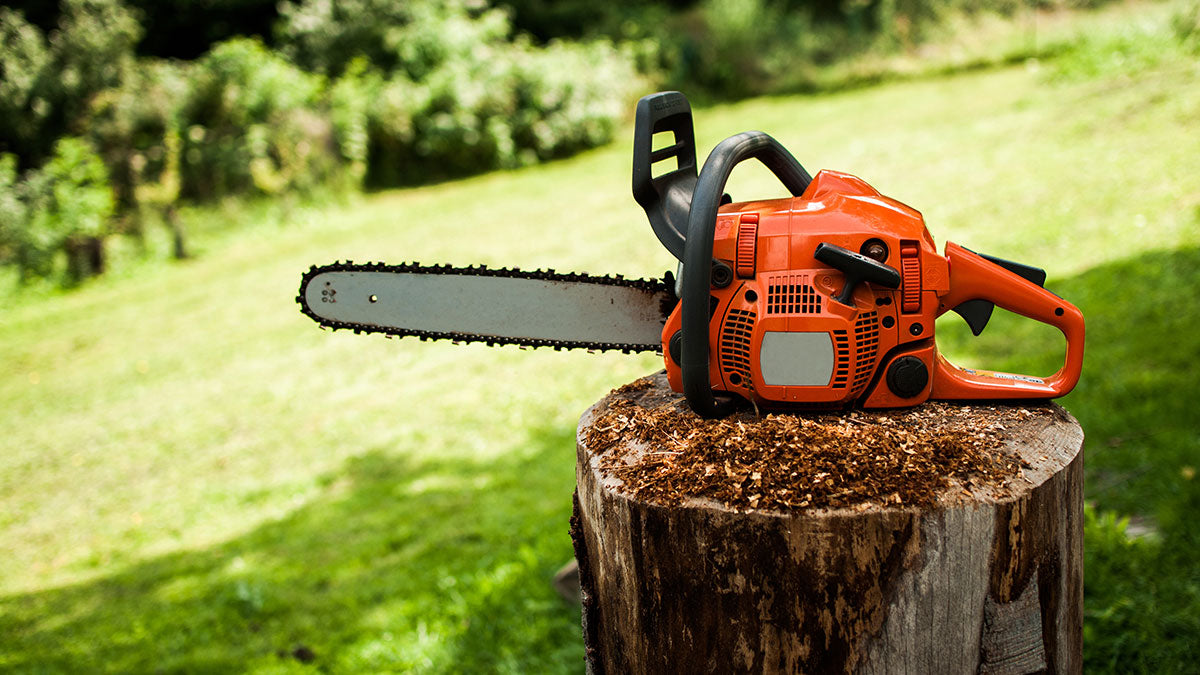Chain Saw
Chain Saw Buying Guide: Types, Features, Safety & Best Practices

Whether you’re trimming branches, felling trees, or cutting firewood, a chain saw is an indispensable tool for outdoor cutting tasks. Choosing the right model depends on power source, bar length, safety features, and intended use. From gas-powered workhorses to lightweight electric or battery-powered models, each saw offers unique benefits for users of all skill levels.
In this guide, you’ll find expert advice on chain saw types, key features, bar sizing, maintenance tips, and top-rated brands—so you can work smarter, safer, and more efficiently.
Key Takeaways
-
Gas, electric, battery, and pole chain saws serve different needs based on power, portability, and user experience.
-
Bar length determines the size and type of material the saw can handle efficiently.
-
Critical features include ergonomic design, automatic oilers, tool-less chain tensioning, and built-in safety mechanisms.
-
Gas models offer maximum cutting power, while electric and battery chain saws are quieter, eco-friendly, and low maintenance.
-
Proper safety gear, training, and routine maintenance ensure safe operation and extend tool life.
Types of Chain Saws and Their Best Uses
Understanding your options is the first step in selecting the right chain saw. Each type serves a distinct purpose:
Gas-Powered Chain Saws
Best for heavy-duty jobs, such as felling large trees, cutting hardwood logs, and extended outdoor use. They deliver high torque and fast cutting speeds but are noisier and require more maintenance.
Electric Chain Saws (Corded)
Ideal for light to medium tasks like trimming, pruning, and occasional cutting near a power source. They offer continuous runtime, low noise, and minimal maintenance.
Battery-Powered Chain Saws (Cordless)
Offer great portability and cleaner operation for medium-duty work like yard maintenance or landscaping. Runtime depends on battery capacity, but recent models offer surprising power.
Pole Chain Saws
Extend your reach for safe overhead branch trimming without needing a ladder. Typically available in electric or cordless configurations.
Choose the type that aligns with your cutting needs, physical demands, and project scale.
Key Features to Look For in a Chain Saw
Your chain saw's performance, safety, and ease of use depend on its specifications and design.
Performance Specifications
-
Engine power: Measured in cc (gas) or amps (electric). More power = faster, smoother cutting.
-
Chain speed: Affects cutting efficiency and clean finishes.
-
Weight: Lighter saws reduce fatigue but may sacrifice power.
Safety Features
-
Chain brake: Stops the chain immediately during kickback.
-
Low-kickback chain: Reduces the chance of a dangerous recoil.
-
Hand guards: Protect fingers from accidental contact.
User-Friendly Design
-
Tool-less chain tensioning: Quickly adjust the chain without additional tools.
-
Automatic oiler: Keeps the chain lubricated, improving performance and lifespan.
-
Anti-vibration handles: Reduce operator fatigue on long jobs.
Prioritize models with high-quality safety systems and intuitive controls, especially if you're a beginner.
Choosing the Right Bar Length
The bar length determines how thick a piece of wood you can cut in one pass—and how easily you can handle the saw.
| Bar Length | Best For |
|---|---|
| 10–14" | Light pruning, small branches |
| 16–18" | Medium logs, general yard work |
| 20–24"+ | Large tree felling, heavy-duty use |
Shorter bars are safer and easier to control, especially for new users. Longer bars increase cutting capacity but add weight and vibration, requiring more skill.
Always match the bar length to your regular workload. Don't buy a longer bar than necessary—it may just slow you down and add risk.
Gas vs. Electric vs. Battery: Which Is Best?
Here’s a quick comparison to help you decide between power sources:
| Feature | Gas | Electric (Corded) | Battery (Cordless) |
|---|---|---|---|
| Power | High | Moderate | Moderate |
| Noise | Loud | Quiet | Quiet |
| Maintenance | Frequent (fuel, filter) | Low | Low |
| Runtime | Long (refuel anytime) | Unlimited | Limited by battery |
| Portability | Excellent | Limited (corded) | Excellent |
| Emissions | High | None | None |
Choose gas-powered for long, rugged jobs; corded for small backyard tasks near power; or cordless for flexibility without the fumes or cords.
Safety Gear and Operating Precautions
Before you fire up your chain saw, protect yourself with essential PPE (Personal Protective Equipment):
-
Helmet with face shield or safety goggles
-
Cut-resistant gloves
-
Chainsaw chaps or protective pants
-
Steel-toe boots
-
Hearing protection
Key Safety Tips:
-
Learn the kickback zone—avoid letting the top of the bar nose touch wood.
-
Use both hands with a firm grip at all times.
-
Keep bystanders away from your cutting area.
-
Maintain a balanced stance and never cut above shoulder height.
-
Read the user manual and perform a pre-use inspection before every session.
Maintenance Tips to Extend Tool Life
Consistent care keeps your saw cutting clean and operating safely.
After Each Use:
-
Clean the bar, chain, and sprocket
-
Empty fuel if using a gas saw and storing it for more than a few weeks
-
Check oil levels and refill as needed
-
Inspect chain tension and adjust
Weekly or Monthly:
-
Sharpen the chain using a file or guide
-
Clean the air filter
-
Inspect spark plug (gas models)
-
Check for cracks or excessive wear on the bar
Regular upkeep minimizes unexpected failures and keeps performance consistent.
Troubleshooting Common Chain Saw Issues
Some common issues and how to fix them:
-
Won’t Start?
-
Check spark plug, air filter, and fuel line (gas) or battery connection (cordless).
-
-
Chain Doesn’t Move?
-
Inspect chain brake. Adjust or replace chain tension.
-
-
Poor Cutting?
-
Dull chain or insufficient lubrication. Sharpen or replace chain and refill oil.
-
-
Overheating?
-
Blocked air vents, dull chain, or low oil can all cause excessive heat.
-
Recommended Brands and Models
When comparing chain saw brands, a few stand out for reliability, safety, and durability:
Stihl MS 271 Farm Boss
Powerful, fuel-efficient, and built for extended farm and ranch use.
Husqvarna 455 Rancher
Popular for its balance of power and comfort, suitable for semi-pro users.
Echo CS-400
An excellent value option for homeowners—easy to maintain and quick to start.
Before buying, consider service availability, warranty coverage, and user reviews to find the right fit.
Frequently Asked Questions
Can a Chain Saw Cut Plastic or Metal?
Only use chain saws on materials they’re designed for. Cutting metal or plastic without proper blades and safety gear is dangerous and can damage the saw.
How Do I Dispose of an Old Chain Saw?
Check local recycling centers or hazardous waste drop-off points. Never throw power tools into regular trash bins.
What’s the Environmental Impact of Chain Saws?
Gas saws emit fumes and noise. Electric and battery models reduce emissions and noise pollution, making them more eco-conscious choices.
Are Chain Saws Legal in Urban Areas?
Many cities restrict chain saw use by time of day, noise level, or type of saw. Check with your local municipality before using one in an urban setting.
How Should I Transport a Chain Saw?
Drain fuel (if gas-powered), use a bar cover, and secure it in your vehicle to prevent movement or leaks.
Final Thoughts
A quality chain saw is a powerful ally for managing trees, preparing firewood, or clearing land. Whether you need maximum cutting power or a light-duty tool for occasional tasks, choosing the right type, size, and safety features will make your work faster, safer, and more satisfying.
Remember, over 36,000 chainsaw injuries occur in the U.S. annually—so invest in protective gear, follow manufacturer instructions, and stay alert during use.
Choose wisely, maintain regularly, and your chain saw will be a dependable tool for years to come.




